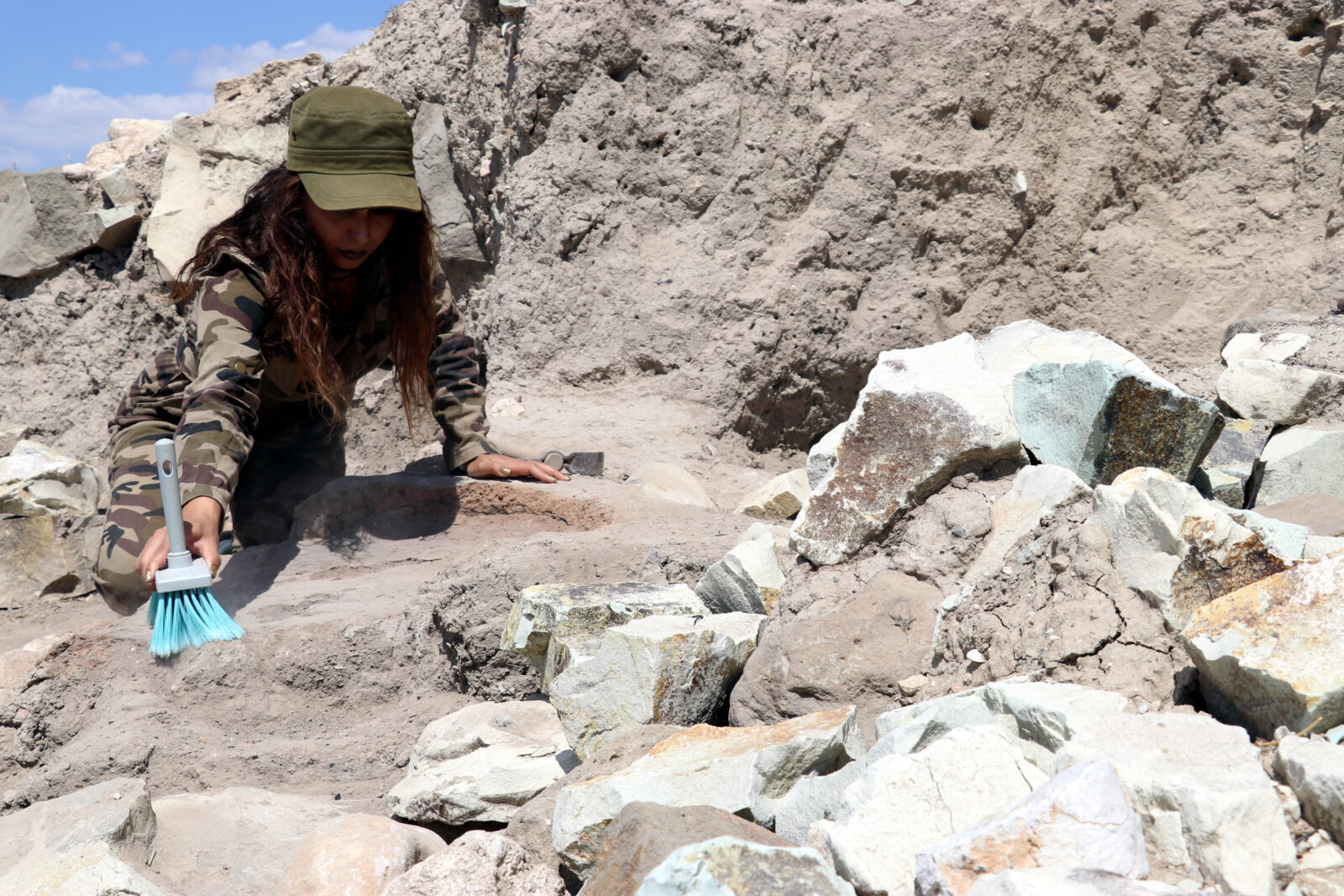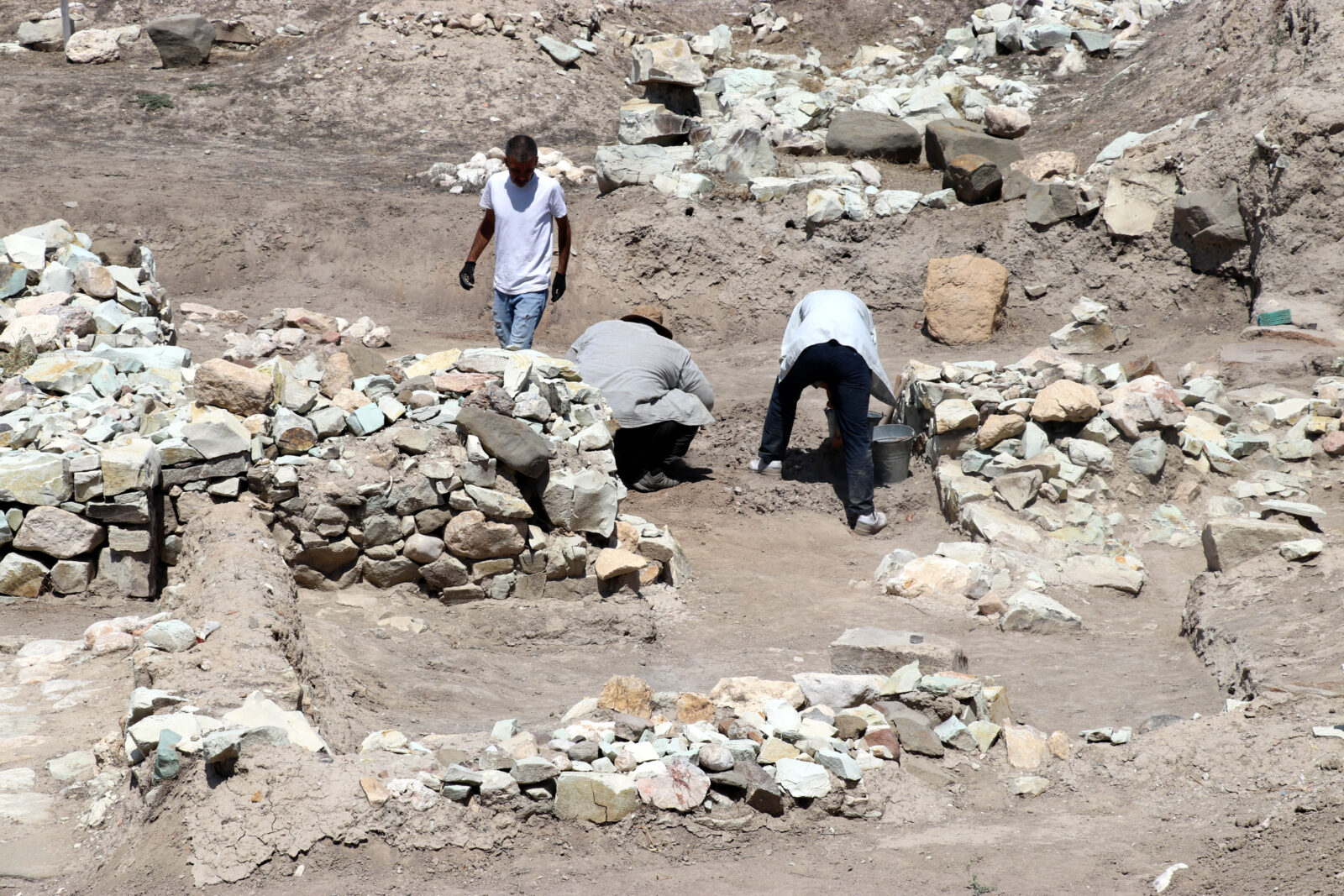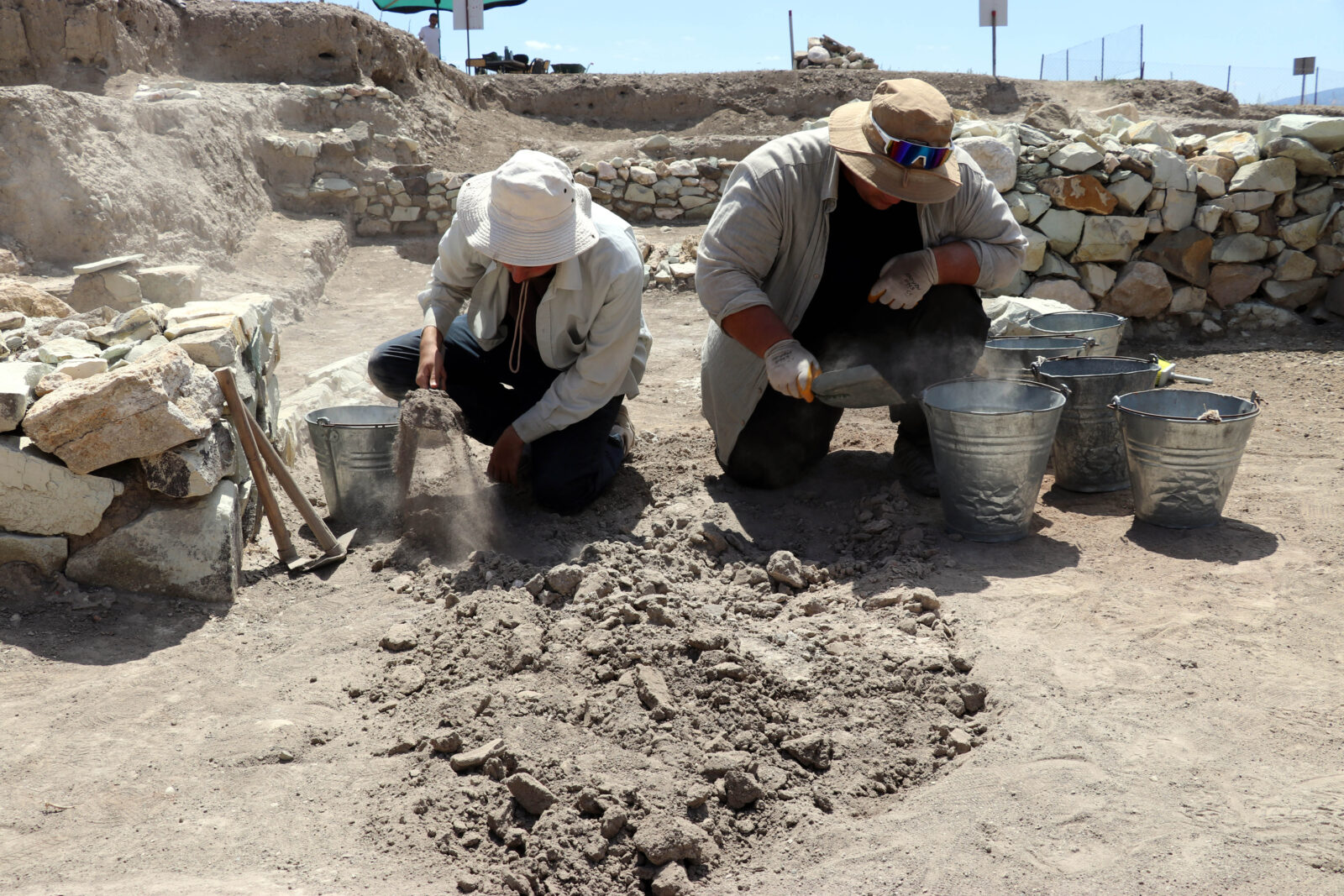
Archaeologists excavating Oluz Hoyuk in Goynucek, Amasya, have discovered a 2,600-year-old fire altar that belonged to the Medes. This significant find dates back to the sixth century B.C., when the Medes ruled the region.
Previous excavations at Oluz Hoyuk revealed pottery, altars and architectural structures attributed to the Medes. This year, the discovery of a fire altar, considered sacred by the Medes, adds a new dimension to our understanding of their presence in Anatolia.

Leading the excavation, professor Sonmez from Istanbul University’s Faculty of Letters, Department of Archaeology, shared insights with Anadolu Agency reporters. Donmez emphasized that their 18-year-long excavation at Oluz Hoyuk has revealed crucial information about the Medes. He explained that the Medes settled in Oluz Hoyuk between 580 and 600 B.C., following the fall of the Urartian Kingdom, and gradually expanded westward.
"This year’s excitement stems from the fact that we are uncovering remains from the Median period," Donmez noted. "The fire altar we discovered is a square-shaped structure, considered sacred by the Medes. This discovery is significant as it provides the first archaeological evidence of Median presence in Anatolia, including architectural elements and small finds."

Donmez elaborated on the sacred nature of the fire altar, describing it as a central element in the Medes' religious practices. "The altar, located in an open and expansive area, was originally a Firik altar but was transformed by the Medes. They modified it by adding a sacred fire pit to the north and a fire platform to the south, turning it into a fire altar."

He also highlighted the cultural implications of the find, suggesting it represents a shift from polytheistic to potentially early Zoroastrian religious practices in Anatolia. "This transition reflects a significant religious transformation in the region, marking a step from polytheism to monotheism."
Donmez further emphasized that the Medes were undoubtedly an Iranian race closely related to the Persians. The excavations at Oluz Hoyuk will continue until the end of October.